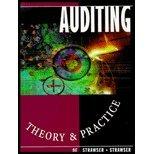Question
If you were given this problem with the data table and just asked how to allocate 4 volunteers for litter pickup, you probably would have
If you were given this problem with the data table and just asked how to allocate 4 volunteers for litter pickup, you probably would have used "brute force permutation" to answer it. In other words, you would have just calculated total trash pick up under the different possible permutations (4-0, 3-1, 2-2, 1-3, 0-4) of volunteers and seen which one had the maximum trash pick up. This would have given you the correct answer of 3 to Whitetail and 1 to Riverside and a yield of 178 pounds. I led you to the answer in a different way because our objectives are to learn something here that is better and broader than that! 1) Usually "in the real world" nobody hands you a convenient table, and the possible permutations are not so short and easy that yields to a brute force method. The instances in which you can solve a complicated problem with brute force are very limited! 2) By contrast, marginal analysis reveals that we can get to the right answer with a much simpler heuristic: "What if I send one more volunteer over to trail A? What if I send another to trail B?" While not always "easy" to answer, it is often answerable and it will lead to the right answer: The lowest marginal opportunity cost for the first volunteer is at Riverside (80 lbs); the second volunteer is at Whitetail (83lbs), the third volunteer is Whitetail again (3 lbs), the fourth volunteer is .... well you already found that! 3) Another, more subtle, lesson is to see the natural emergence of comparative advantage. Any approach you might have used to get the litter pick-up maximizing answer replicates the answer a planner using the principle of comparative advantage would provide to efficiently use resources! In the earlier example with Slavia and Lebos the "states decide" but that is rather artificial. Individual farmers instead figure out the lowest opportunity cost use of their land, and selection pressure favors efficient resource usage.
If you were given this problem with the data table and just asked how to allocate 4 volunteers for litter pickup, you probably would have used "brute force permutation" to answer it. In other words, you would have just calculated total trash pick up under the different possible permutations (4-0, 3-1, 2-2, 1-3, 0-4) of volunteers and seen which one had the maximum trash pick up. This would have given you the correct answer of 3 to Whitetail and 1 to Riverside and a yield of 178 pounds.
I led you to the answer in a different way because our objectives are to learn something here that is better and broader than that!
1) Usually "in the real world" nobody hands you a convenient table, and the possible permutations are not so short and easy that yields to a brute force method. The instances in which you can solve a complicated problem with brute force are very limited!
2) By contrast, marginal analysis reveals that we can get to the right answer with a much simpler heuristic: "What if I send one more volunteer over to trail A? What if I send another to trail B?" While not always "easy" to answer, it is often answerable and it will lead to the right answer: The lowest marginal opportunity cost for the first volunteer is at Riverside (80 lbs); the second volunteer is at Whitetail (83lbs), the third volunteer is Whitetail again (3 lbs), the fourth volunteer is .... well you already found that!
3) Another, more subtle, lesson is to see the natural emergence of comparative advantage. Any approach you might have used to get the litter pick-up maximizing answer replicates the answer a planner using the principle of comparative advantage would provide to efficiently use resources! In the earlier example with Slavia and Lebos the "states decide" but that is rather artificial. Individual farmers instead figure out the lowest opportunity cost use of their land, and selection pressure favors efficient resource usage.
Upload a word or other type-setting document that shows your thinking/work behind your answer (where applicable, of course).
Step by Step Solution
There are 3 Steps involved in it
Step: 1

Get Instant Access to Expert-Tailored Solutions
See step-by-step solutions with expert insights and AI powered tools for academic success
Step: 2

Step: 3

Ace Your Homework with AI
Get the answers you need in no time with our AI-driven, step-by-step assistance
Get Started


